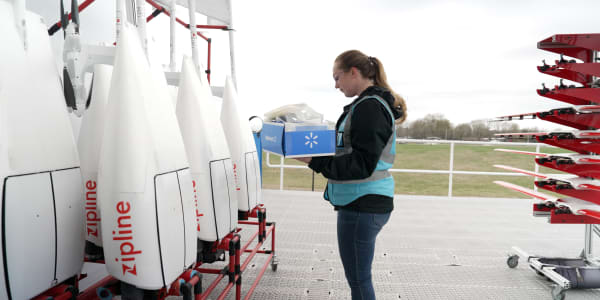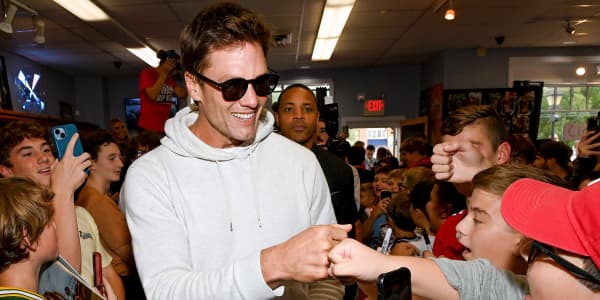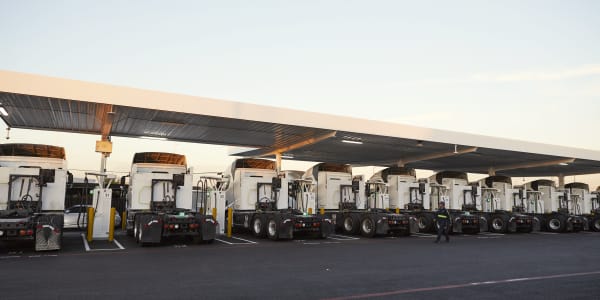Move over GrubHub. There's a start-up shaking up the fast-casual food-delivery industry. Its niche play: chef-made gourmet takeout meals for the masses.
Like many inspired business innovations, Munchery began with a question: What's for dinner? Tri Tran, the founder and CEO of the San Francisco-based food-delivery service, said he faced that daunting dilemma each night as an overworked software engineer and father of two hungry boys. "My wife didn't cook, so dinner was up to me, and usually we'd order in greasy, cheesy pizza or Chinese," he said.
There's plenty of room to grow in a dining market where everyone needs to eat, everyone likes convenience and everyone appreciates good value.Michael DempseyAnalyst, CB Insights
The aha moment hit when Tran talked to a neighbor who worked as a personal chef. "He would go into clients' houses with a half-dozen freshly prepared meals that went into the fridge so the person could have a week's worth of dinners," he explained.
That luxury came at a steep cost, so Tran, who was building computer systems for philanthropies at the time, devised a more sensible solution—chef-made meals for the takeout masses, and at a price much easier to swallow. From the beginning, orders were built for delivery, arriving chilled in earth-friendly containers ready to go into the oven or microwave.
Founded in 2011, Munchery now delivers each weekday in four major markets—the San Francisco Bay area, Los Angeles, Seattle and New York City—for around $8 to $12 a dish. Everything is prepared fresh, with an emphasis on healthy ingredients, in a dedicated kitchen in each metro region.
Read MoreCeleb chef's recipe for success: Fast casual
Most meals arrive within 20 to 40 minutes of ordering via Munchery's app. With $117 million in venture funding—including a third-round $85 million infusion last May led by Menlo Ventures and Sherpa Ventures—Munchery is the player to watch in the booming fast-casual delivery business, a sector that includes Door Dash, GrubHub, PostMates, Seamless and Sprig, said Michael Dempsey, a research and data analyst at CB Insights.
"There's plenty of room to grow in a dining market where everyone needs to eat, everyone likes convenience and everyone appreciates good value," Dempsey said. But he cautions that Munchery faces fierce competition, high labor and distribution costs and a fickle consumer base.
Read MoreGrubHub should be a way of life
Venture capitalist Pravin Vazirani at Menlo Ventures was a believer from the seed round. "What Munchery is trying to do is to be everyday solution for dinner at a price point that makes sense for people to use weekly if not daily," he said. "The closest competitor, as odd as it sounds, isn't other delivery services but rather grocery stores and cooking for yourself."
What distinguishes Munchery are the chefs it partners with, including alums of fine dining establishments, such as Le Bernardin, Daniel, Michael Mina, Chez Panisse and more. Last month, L.A.'s Roy Choi, whose food-truck success inspired the movie "Chef," signed on.
"Chefs are using Munchery as a platform to reach people in a way they couldn't do at even the busiest restaurants," Tran said. "If you have 30 seats or 50 seats, that puts a cap on how many people you can serve. For us, the limit is literally the city population itself."
To meet demand on that scale, Munchery pairs creativity with science in the form of advanced kitchen technology. Massive ovens let chefs cook 500 pieces of salmon simultaneously in temperature- and moisture-controlled units. Buying lots of ingredients means higher purchasing power at farms and wholesalers.
And since there's no need for fancy storefronts or walk-in traffic, prime real estate isn't an issue. "We love operating out of facilities in the cheaper parts of town," Tran said. "That way, we get to pass savings along to the consumer."
He points to Chipotle as an example of how different Munchery's model is. "Yes, we have facilities, but in the grand scheme we're much less capital intensive," said Tran. "Each of their locations costs $1 million or $1.5 million, and it takes 40 stores to serve a metro area. That's $50 million into the ground. With one facility, no overhead and an efficient delivery system, it costs us nowhere near that much."
Munchery's San Francisco headquarters now has 60 employees, and there are plans to expand to 10 markets over the next several years, Tran said. By then, the company will also offer lunch and weekend service, which is beginning to roll out in parts of the Bay Area.
It's a long way from the early days, when Tran himself delivered all the meals during Munchery's first six months. "It was hectic, but I learned what people want and we put some systems in place that remain today," like texting customers 10 minutes in advance of the meal arriving, he said.
Tran's personal story makes Munchery's success especially appealing. Born near the end of the Vietnam War in a village just south of what is now Ho Chi Minh City, his parents put him and his brother on a refugee boat when Tran was just 11 so they could have a better life with relatives in San Jose. He didn't see his parents again until he finished college, 11 years later.
"It's ironic in some ways," said Tran, who has an easy laugh and a sunny demeanor. "The boy who grew up without enough food is now surrounded by all these delicious meals."
—By David Hochman, special to CNBC.com





